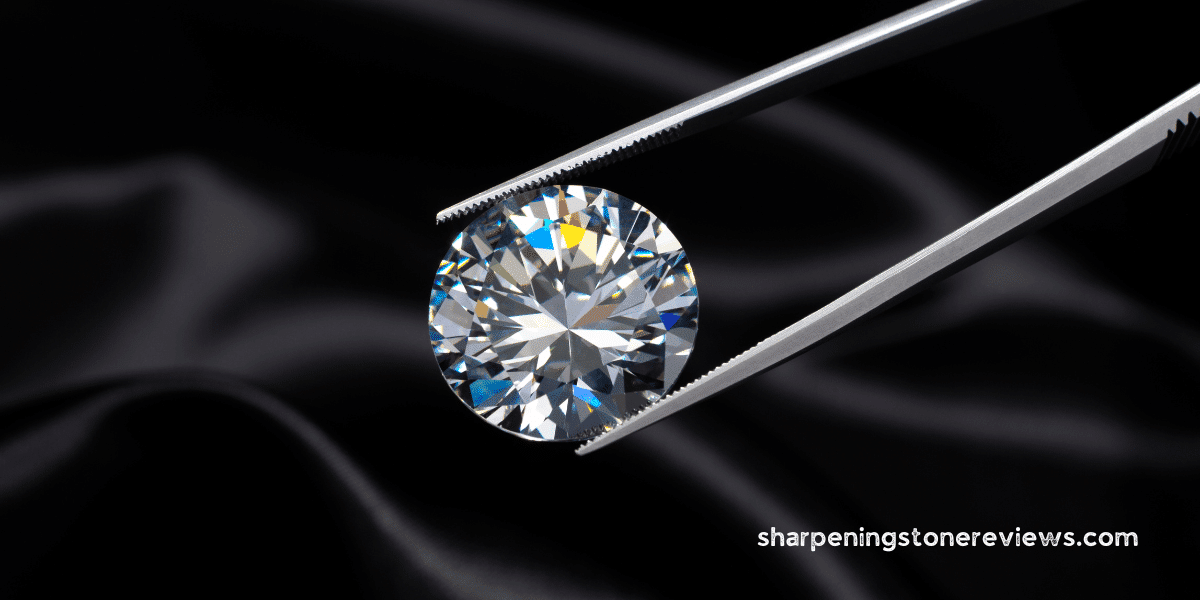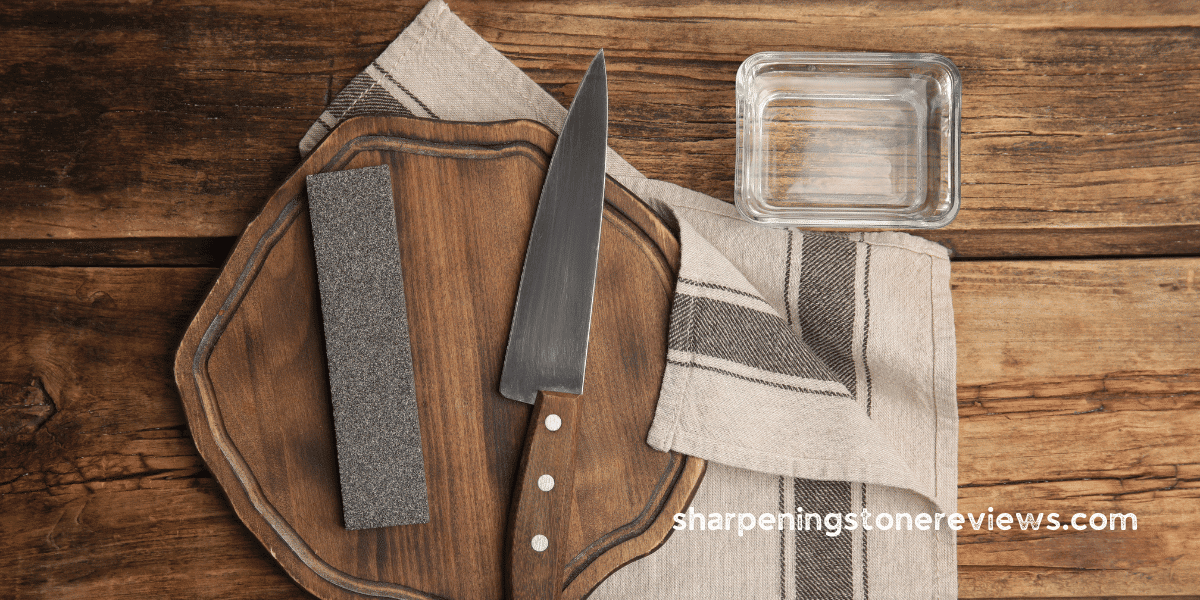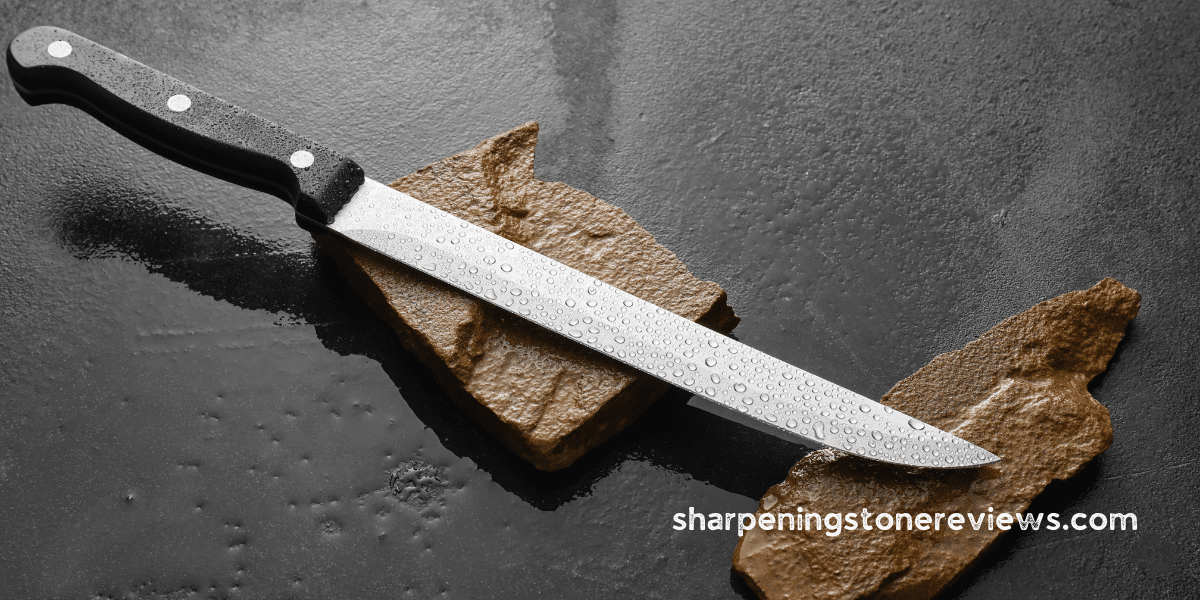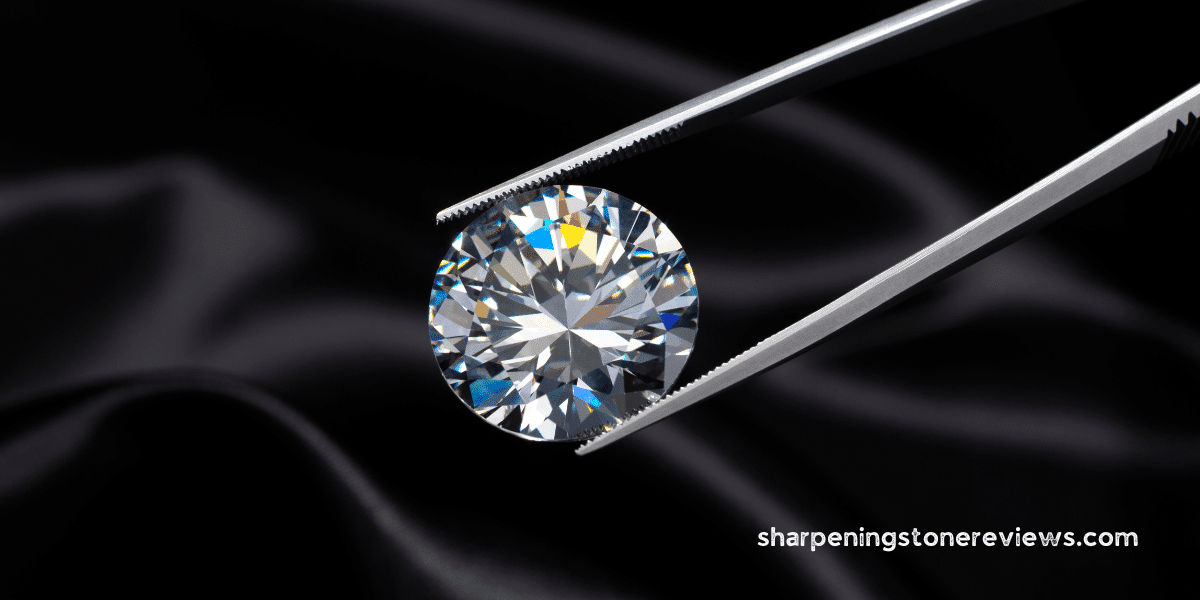Breaking a diamond may seem impossible, but it can be done. Picture a diamond in your mind: a gleaming gem reflecting light from every angle. But behind that beautiful façade lies a rigid carbon lattice that makes it incredibly hard yet brittle. You’ll need to apply mechanical pressure, high temperatures, acid, friction, or energy to break it.
But how? Don’t worry; we’re here to help. In this article, we’ll discuss the various techniques you can use to break a diamond and provide professional advice if you need it.
So, if you’ve ever wanted to know how to break a diamond, you’ve come to the right place.
Understanding the Properties of a Diamond
Understanding the properties of a diamond is crucial if you want to know how to break it. Diamonds are incredibly resistant to acids and temperatures but can easily chip or fracture if not properly cared for and protected.
Diamonds have an intricate lattice structure that makes them extremely hard. However, they are still relatively brittle. Areas with less tight bonding are more susceptible to damage.
For example, a hammer blow could be enough pressure to split a diamond, depending on the material and the spot struck. To break a diamond, you need to hit it in the right spot with enough force to break its strong structure.
Therefore, it is important to take the time to understand the properties of a diamond and identify its potential weak points before attempting to break it.
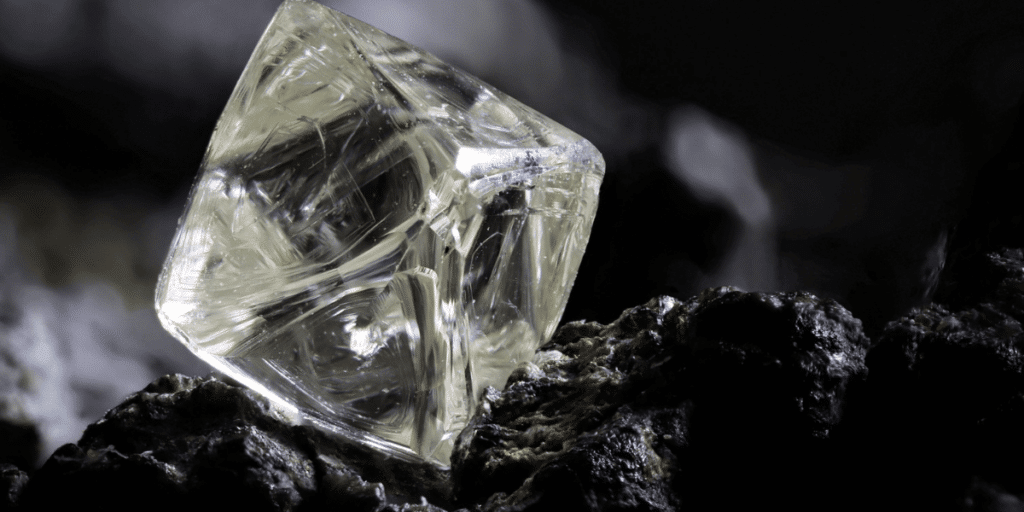
Applying Mechanical Pressure
To shatter a diamond, an intense force must be applied in the precise location. The stone’s hardness on the Mohs scale ranks it among the world’s hardest materials. However, the diamond’s strength does not come from its hardness; it depends on its internal lattice structure of carbon atoms. Steel absorbs force with its ionic structure, making it strong but not as hard as diamond.
Impacting a diamond at the right angle and with enough force can break it, but it isn’t easy. Here are some tips:
- Apply Force: Use a hammer or other tool to apply a focused force in the right spot.
- Find Weaknesses: Look for inclusions or cleave lines to maximize the force of impact.
- Be Mindful: Be aware of your diamond and take precautions to avoid damage.
Breaking a diamond requires a lot of skill and knowledge. It’s best to consult a diamond expert for advice and help. With safety and caution, chipping and cracking your diamond can be avoided.
Using High Temperature
Heating a diamond too quickly or to a high temperature can be as destructive as applying too much force – like a ticking time bomb. Did you know that diamonds are composed of carbon atoms arranged in a lattice structure? This unique structure makes them the hardest natural mineral known on the Mohs scale. But this hard exterior can be broken if exposed to too much heat or a sharp blow. Pressure buildup in the diamond atom structure from heat can cause a diamond to fracture, resulting in irreparable damage. |Process|Risk| |—|—| |Quick Temperature Change| High-Pressure Buildup| |High Temperature|Diamond Fracturing| |Sharp Blow|Inner Structure Damage| |High Heat|Irreparable Damage| Knowing how to care for a diamond properly will help keep it safe and sparkly. Be mindful of your diamond and contact a diamond expert for any questions or concerns.
Dissolving with Acid
Be aware that even the most robust diamond can be destroyed by acid, so keep your precious stone away from any harsh chemicals.
Diamonds are carbon atoms arranged in a lattice structure, making them hard and resistant to scratches. However, this same structure can cause them to be vulnerable to acid.
If the acid comes into contact with the diamond, it can dissolve the carbon atoms, creating weak spots and cleavage planes. This can cause your diamond jewelry or diamond rings to become damaged or destroyed.
To prevent this, ensure your diamond is not exposed to any acid. If you come into contact with acid, immediately clean off your diamond with a soft cloth and soapy water.
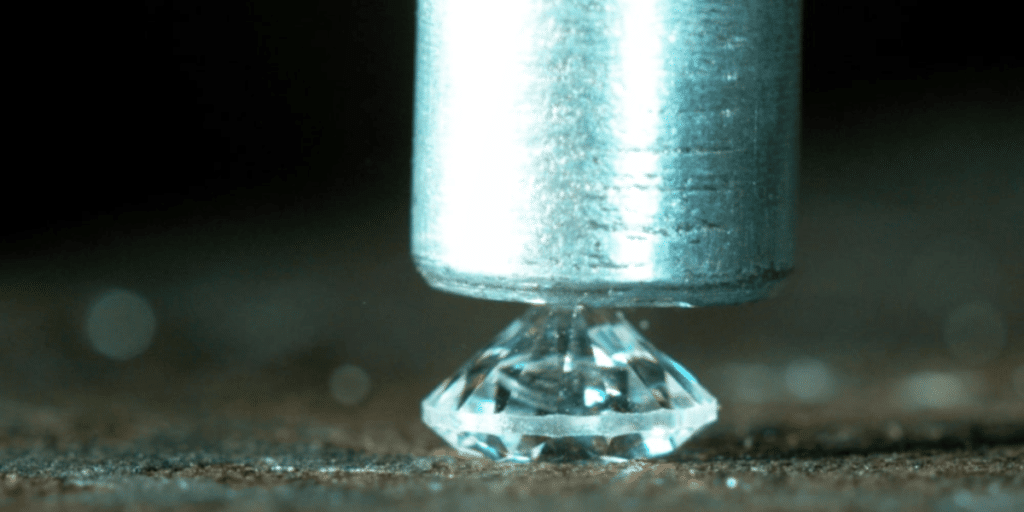
Using Friction
Friction can be a diamond’s undoing. It can cause its facets to rub together and quickly erode, like water on a stone.
This can be especially true for diamond girdles. These are the thin bands of metal that encircle the diamond. If too much tension is placed on the diamond, it can cause the girdles to rub together and begin to wear away.
If you’re lucky, you can even break a diamond with the help of a steel hammer. However, it requires a lot of luck and skill to hit the diamond in just the right corner and with enough force to cause it to break.
To avoid potential damage, it is best to handle diamonds with care and store them in a safe place.
Applying Energy
Moving on from using friction to break a diamond, another way to achieve this is by applying energy. Breaking a diamond requires a decisive blow to a specific spot, which can be challenging with a hammer. This is because diamonds are naturally complex and difficult to break. However, if a decisive blow is applied to the right spot, the diamond will break into individual stones.
The cleavage plane, the weakest area in a diamond, can be targeted to break it. By hitting this area, the diamond can be successfully broken. It’s important to remember that the more powerful the blow, the easier it is to break the diamond.
Seeking Professional Assistance
If you need help handling a diamond, seeking professional assistance is essential. Experienced gemstone experts can provide valuable information and guidance to help you make the best decisions for your diamond. With their expertise, they can evaluate the damage’s extent and suggest the most appropriate course of action to take. Whether it’s a broken diamond or a solid blow to the wrong area, diamond cutters can offer advice on repairing or replacing the diamond. Chipped or broken diamonds may have little to no trade-in value, so insurance companies may be able to provide the best coverage.
| Benefits | Risks |
|---|---|
| Valuable advice from experienced gemstone experts | Chipped or broken diamonds may have little to no trade-in value |
| Professionals can assess the damage and recommend a course of action | Risk of impacting the diamond in the wrong area |
| Insurance companies offer the best coverage | |
| Damage to diamonds can be irreparable. |
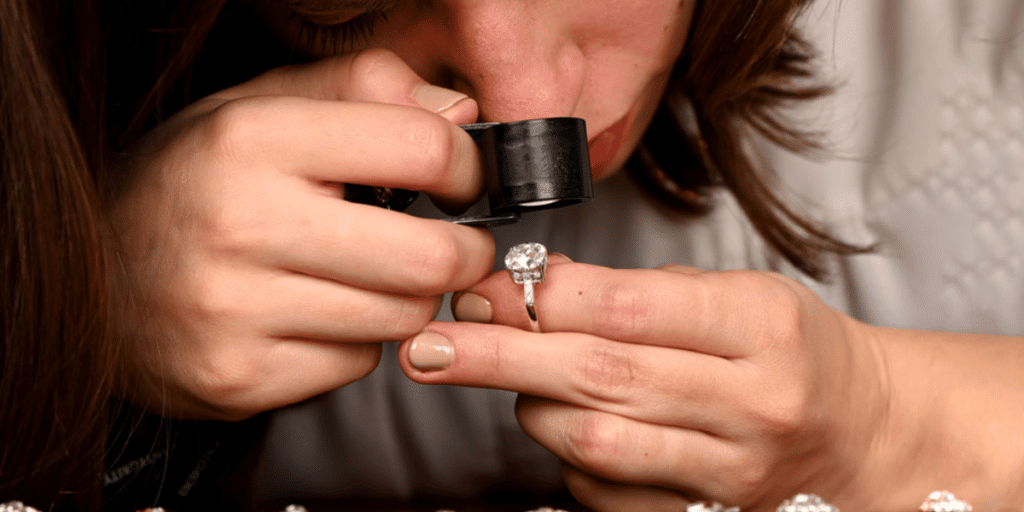
Frequently Asked Questions
What is the best way to store a diamond?
Store your diamond in a safe, secure spot. Choose a dry, excellent location away from windows and heat. Please protect it from knocks, bumps, and scratches. Take extra precautions when packing and traveling with your diamond. Please keep it in a soft pouch or case to avoid contact with other jewelry.
How do I know if a diamond is natural?
You can tell if a diamond is natural by inspecting it. Look for an experienced diamond wholesaler or jeweler to examine the diamond’s clarity, weight, and quality. They can also use special tools to check for authenticity.
How can I tell if a diamond has been damaged?
Check your diamond for chips, cracks, or bent or broken prongs. Inspect the ring for any changes in the diamond’s brilliance. Have a diamond expert inspect the diamond for any imperfections. Consult a diamond wholesaler for repairs if needed.
What are the benefits of buying a certified diamond?
Buying a certified diamond gives you peace of mind. You know the diamond has been inspected for quality, flaws, and other factors. Certified diamonds carry a guarantee and assure their authenticity.
What is the safest way to clean a diamond?
Clean your diamond with a soft, lint-free cloth and warm, soapy water. It is recommended to steer clear of using harsh chemicals like bleach as they can cause damage to the surface of the diamond. With care and regular inspections, your diamond will retain its sparkle and shine for years.
